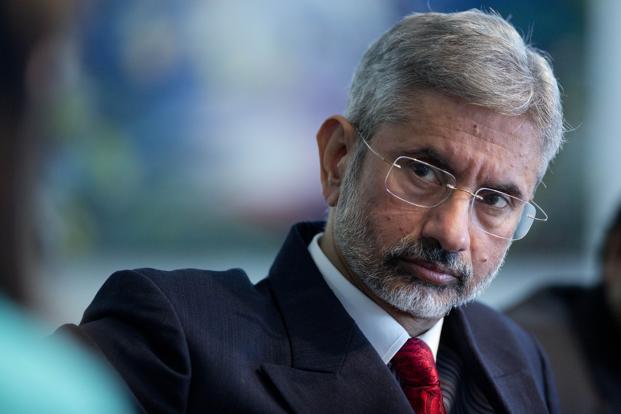The era of Non-Alignment which was India’s staple foreign policy since the 1950s belongs to a bygone-era says Minister for External Affair Minster S. Jaishankar as India and the United States conduct the joint naval exercise in Andaman and Nicobar Islands.
The External Affairs Minister is also set to release his new book titled “The India Way: Strategies For An Uncertain World”.
A two-year project finally concluded. Thank all those who made it possible.
Should hit the bookstands in early September. pic.twitter.com/kCwllTDmAk
— Dr. S. Jaishankar (@DrSJaishankar) July 21, 2020
Responding to a question of India moving away from its non-alignment principle, Deccan Chronicle quoted Minister Jaishankar saying, “Non-alignment was a term of a particular era and geopolitical landscape,” Jaishankar said during a discussion on a TV channel. “The era of great caution, the era of greater dependence on multilateralism…that era is to a certain extent behind us,”.
Jaishankar’s comment could not have come in a crucial time when India is standing up to a China which is constantly trying to bully practically every country it shares a border with.
As the Indian Foreign Minister said, non-alignment is now a policy of a bygone era, Indian Navy’s warships INS Rana, INS Sahyadri, INS Shivalik, and INS Kamorta are involved in an intense naval exercise with the USS Nimitz Carrier Strike Group in the Indian Ocean off Andaman and Nicobar Islands.
Apart from the nuclear-powered aircraft carrier, USS Nimitz, guided-missile cruiser USS Princeton and missile destroyers USS Sterett and USS Ralph Johnson joined the Indian Navy.
The purpose was to improve interoperability between two of the worlds most advanced navies. Both the countries are conducting high-end exercises designed to maximize training and this also includes air defence elements.
It has been reported that the Indian Air Force (IAF) has also sent there Jaguar fighter jets to Andaman and Nicobar Island which is very close to the critical and one of the busiest shipping lane, the Strait of Malacca.
The Jaguar fighters stationed in the Car Nicobar are the maritime strike variant of Jaguar, called Jaguar IM and the operational range is within the Malacca Strait.
The Malacca Strait is a narrow stretch of water between the Malaya Peninsula in the north and the Indonesian island of Sumatra in the south. It is the most crucial shipping lane in the Indian ocean and any blockade could have serious ramification for China.
Malacca Strait is the only shipping channel connecting the Indian Ocean with the South China Sea, It is estimated some 40 per cent trade, including much of China’s imports and exports, passes through the Malacca Strait.
In 2018, the Indian Air Force (IAF) fighters such as Su-30 MKIs and Jaguars with help from the Navy’s Poseidon-8i maritime reconnaissance aircraft conducted Exercise Gaganshakti 2018. This exercise was intended to extend our dominance over the Bay of Bengal region extending up to the Malacca Straits.
But this time the joint drill and the policy shift comments by the EAM has come at a time when China’s aggression in the Line of Actual Control (LAC) has become a regular event.
Such aggressive posters on the border and the constant threat from Pakistan has led to a review of our policy of maintaining strategic ambiguity and develop greater India-US strategic cooperation to counter expansionist aspirations of President Xi Jinping.
The ambush by the Chinese People’s Liberation Army (PLA) had led to the death of 20 Indian army soldiers. The subsequent retaliation by our army also led to an unspecified number of deaths to the PLA, but the two-month-long stand-off along the disputed boundary between the two nations has far from eased.
The Chinese have withdrawn its troops but the complete disengagement process is far from over.
That is the EAM had this to say, “If we are to grow by leveraging the international situation, then we have to exploit the opportunities out there. You cannot do that by saying ‘I’m going to stay away from it all and when I find it useful, I’ll step out.’ Either you are in the game or you are not in the game,”
However, Jaishakar also clarified that India was never a part of any alliance and would never be.
The joint exercise by India and the US is nothing but a clear message to China that it simply cannot flex its newfound economic, political and military muscle to force other countries to agree to its inequitable terms.
The ongoing exercise close to Malacca Strait is to show China that there are countries who can block the important sea lane, vital for the communist country, and could easily choke the movement of its ships.
The US had already stated that it rejects most of China’s territorial claims in the South China Sea as “completely unlawful” and the US Secretary of State Mike Pompeo had also said that, the US will never allow China turn the South China Sea as its “maritime empire”.
Pompeo on July 21 came down heavily on China by saying that China cannot threaten countries and bully them in the Himalayas.
In a show of strength two of the largest nuclear-powered aircraft carriers, the USS Nimitz and the USS Ronald Reagan were deployed in the South China Sea earlier this month and conducted several tactical exercises to maximize air defence capabilities.
The US last week rejected most of China’s territorial claims in the South China Sea as “completely unlawful”. The US Secretary of State Mike Pompeo denounced Beijing’s bid to turn the South China Sea as its “maritime empire”.
It is ironic how far the India-US relationship has come when it comes to strategic cooperation. In 1971, the US, under the Nixon administration had sent its 7th Fleet to the Bay of Bengal, to intimidate India when India was fighting Pakistan in the Eastern and in the Western borders. The relationship has now taken a complete new turn and to greater heights.

